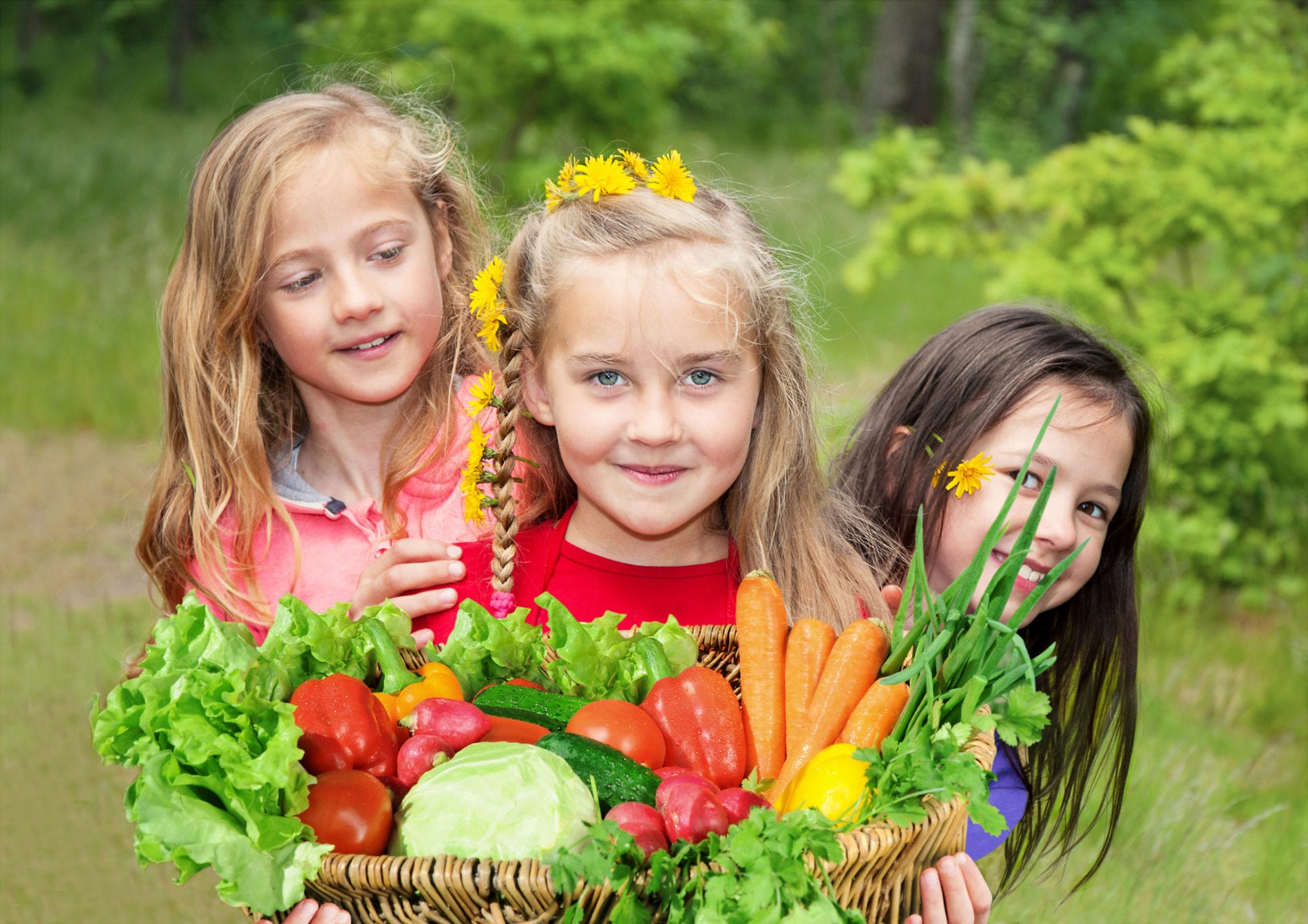
Five Ways to Get Kids To Eat Vegetables
Without Harping, Hiding, or Disguising
Timing and opportunity are everything. Read through these five ways to get kids to eat vegetables. It is important to have the vitamins, minerals, and fiber provided in vegetables for a healthy brain, heart, and digestive system. More importantly, having more vegetables at your table provides eye appeal and “crowds out” the unhealthy extra, empty calories that are so prevalent in our homes and lunchboxes. I can tell you right now that no child or adult will love a vegetable after they have eaten Oreos.
Here are five things you can do to get kids to eat vegetables:
- You (the adult and role model here) need to show enthusiasm and wonder every day of all the food available to us. Take every opportunity to show a child how something grows and where we find it. Open your Harvest2U delivery in front of the kids—do some jumping jacks in celebration of a beautiful purple artichoke or the bright orange of some crazy shaped carrots. Being silly will imprint a child’s mind, and he’ll do this to introduce his own kids to the glory of vegetables.
- You (the adult and role model here) need to prepare vegetables for the kids to eat when they come home. This is when they are the hungriest! They fly through the door; head for the bathroom; then ask “what’s to eat?”. Make a vegetable tray with hummus or Greek yogurt dip. Steam some beautiful broccoli or crisp string beans; then sprinkle with olive oil and parmesan cheese. You can even serve the vegetables and salad you were planning for dinner. Always make extra vegetables so you can make quick omelets or stir-fry rice. Hunger truly is the best sauce!
- You (the adult and role model here) need to have the kids help you shop for vegetables—this is not a task you do when everyone is hungry! Make a game of finding the most unusual vegetable or the prettiest or the lowest priced vegetable of the day. If you don’t know how to cook it, wait until you get home and send one of the kids to the computer to research it and then do a mini-presentation at the table.
More Good Stuff
- You (the adult and role model here) need to provide cooking experiences for the kids. Even the youngest can clean and swish salad greens and tear leaves for a salad. Someone can spin the leaves dry. Older kids need to learn knife skills for chopping and slicing. You can develop the artist in your kids by teaching garnish techniques or how to use a vegetable spiraler. Everyone knows that we love to eat what we create!
- You (the adult and role model here) need to provide a soothing and nurturing environment while preparing and eating food. Have the television off; have someone set the table; make a centerpiece from fresh fruits and vegetables, and give thanks and acknowledgment to all the people who were involved in getting the food to the table.
Create a simple process and keep it simple. You don’t need to prepare casseroles that usually require more time and processed ingredients. Keep only fresh foods available. Stay away from boxed foods. You need to take care of your children by taking care of yourself. Ask for help, and eat well so you can keep your cool and set lifelong healthy habits.
(Courtesy of Raw2Roasted Cooking School)
- Edible Flowers – Not Just a Modern Food Trend
- Swiss Chard with Onions and Vinegar
- Feeding Kids Organic on a Budget Tips and Information – While Ditching the Expensive Junk food
- Moringa Leaves – 5 Reasons It’s a True Superfood
- 15 Radish Recipes to Break Out of the Salad Rut
- Spring Vegetable Risotto – Asparagus, Leeks, and Peas
- No Sugar Added Orange Marmalade with Wine
- Whole Grain Avocado Pancakes – Healthy Way to Start Your Day
- Commercial Potato Farming – Non-Organic Vs. Organic
- Carrot Greens – More Vitamin C Than the Root
- Carrot and Microgreens Juice – Without a Juicer
